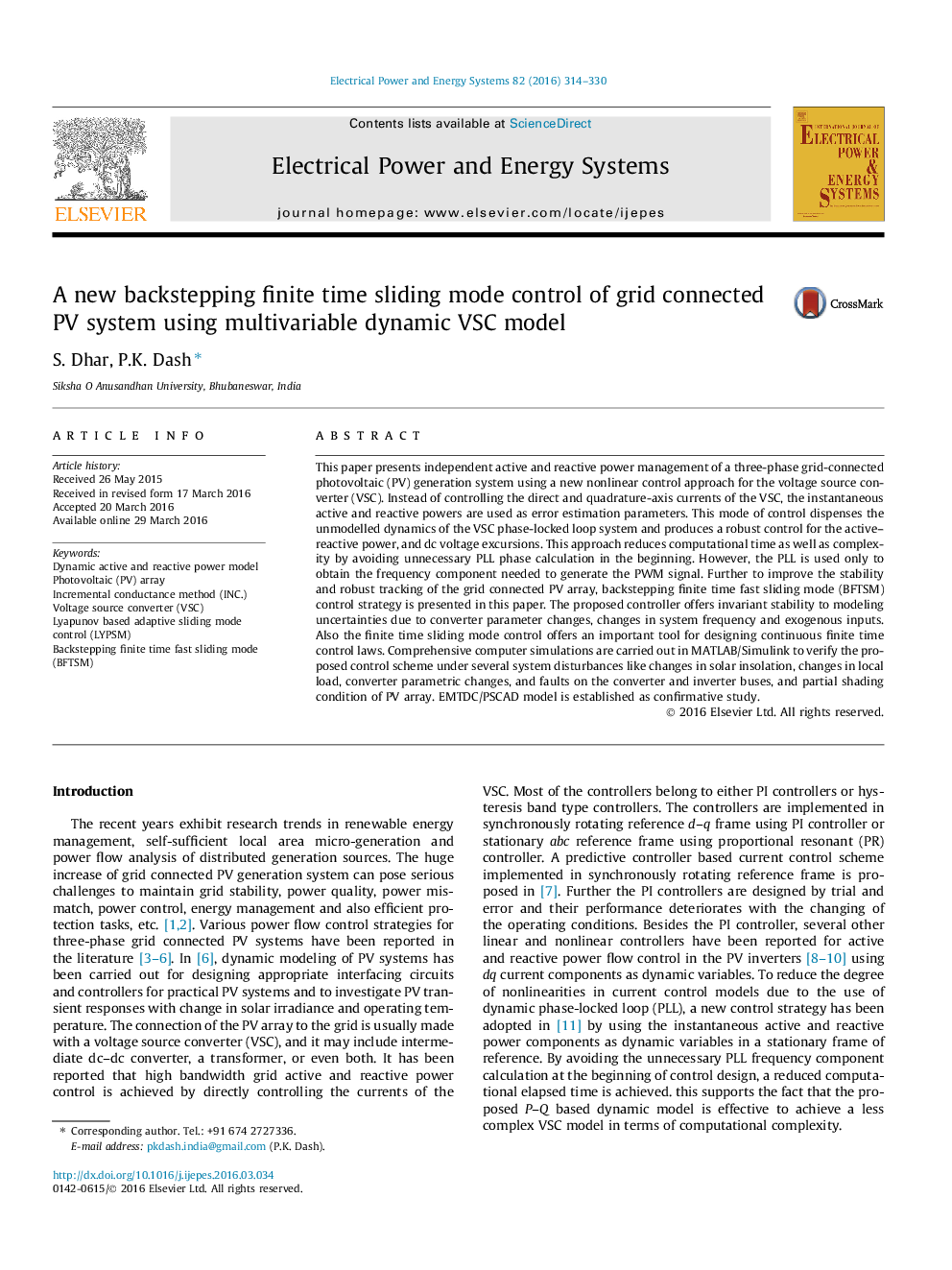| Article ID | Journal | Published Year | Pages | File Type |
|---|---|---|---|---|
| 398208 | International Journal of Electrical Power & Energy Systems | 2016 | 17 Pages |
•Direct power control in phase frame is used instead of using PLL.•For fast convergence a backstepping finite time sliding mode algorithm is developed.•The controller is evaluated for a variety of operating conditions of the PV array including faults and islanding.•Satisfactory performance is achieved in all the cases.
This paper presents independent active and reactive power management of a three-phase grid-connected photovoltaic (PV) generation system using a new nonlinear control approach for the voltage source converter (VSC). Instead of controlling the direct and quadrature-axis currents of the VSC, the instantaneous active and reactive powers are used as error estimation parameters. This mode of control dispenses the unmodelled dynamics of the VSC phase-locked loop system and produces a robust control for the active–reactive power, and dc voltage excursions. This approach reduces computational time as well as complexity by avoiding unnecessary PLL phase calculation in the beginning. However, the PLL is used only to obtain the frequency component needed to generate the PWM signal. Further to improve the stability and robust tracking of the grid connected PV array, backstepping finite time fast sliding mode (BFTSM) control strategy is presented in this paper. The proposed controller offers invariant stability to modeling uncertainties due to converter parameter changes, changes in system frequency and exogenous inputs. Also the finite time sliding mode control offers an important tool for designing continuous finite time control laws. Comprehensive computer simulations are carried out in MATLAB/Simulink to verify the proposed control scheme under several system disturbances like changes in solar insolation, changes in local load, converter parametric changes, and faults on the converter and inverter buses, and partial shading condition of PV array. EMTDC/PSCAD model is established as confirmative study.
Graphical abstractSchematic for proposed control technique (FTBFSM).Figure optionsDownload full-size imageDownload as PowerPoint slide
